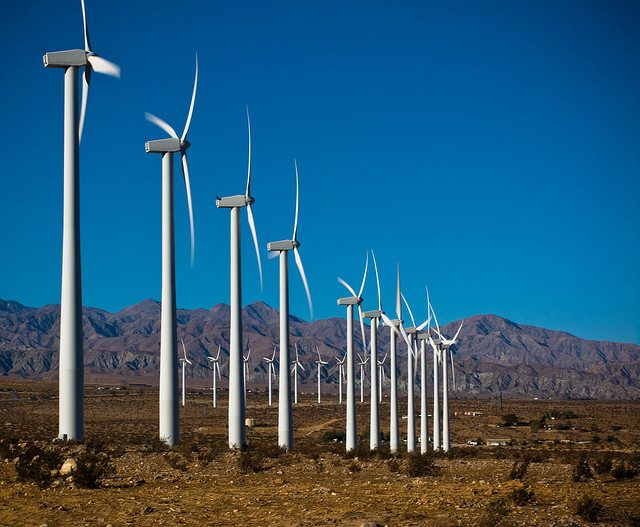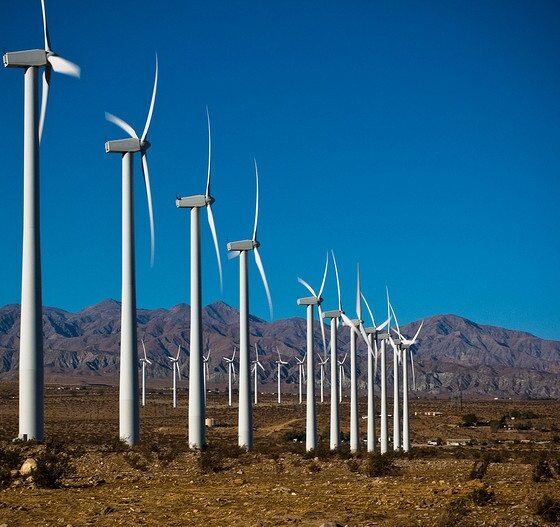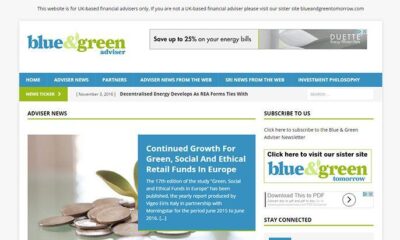

Energy
EIA’s Short-Term Forecasts For Renewables Underestimate Actual Growth
A new report from the SUN DAY Campaign takes a first-ever look at the accuracy of the forecasts for renewably-generated electricity made by the U.S. Energy Information Administration (EIA) in its monthly “Short-Term Energy Outlook” (STEO) reports. Each STEO issued this year has provided EIA’s energy projections for the balance of the current year (i.e., 2015) and the year to come (i.e., 2016).
Key findings of the 10-page report “Some Hits, Some Misses — All-in-All…To Be Taken with a Grain of Salt” include:
Overall, while EIA’s short-term forecasts for 2015 have generally followed the actual pattern of ups-and-downs in rates of electricity generation from renewable energy sources (i.e., biomass, geothermal, hydropower, solar, wind) throughout the year, they have – with some monthly exceptions – underestimated the actual overall growth in renewables. That is, EIA’s predictions for new capacity from, and electricity generated by, renewables in 2015 have generally been lower than has ultimately proven to be the case.
In particular, EIA has failed to capture the magnitude of the rapid growth rates being enjoyed by utility-scale (and possibly distributed, small-scale) solar. Its forecasts for both 2015 and 2016 seem likely to be exceeded by actual growth — and maybe by fairly large margins. EIA’s 2016 predictions of 0.6% – 0.7% for utility-scale solar’s share of total U.S. electrical generation will very possibly be met a year earlier. Predictions of 10 – 12 GW of new utility-scale solar capacity installed between 2014 and 2016 are also likely to be exceeded.
EIA’s 2015 STEO reports began the year much more optimistic about the prospects for both hydropower and wind than has proven to be the case. By spring, output from both sources had fallen significantly below expectations. On the other hand, generation by wind and hydropower now appears to be bouncing back – at least somewhat. Consequently, EIA’s more recent pessimistic forecasts for both of these sources for 2015 probably underestimate the generation that will actually be recorded this year. Wind generation appears headed for levels above those recorded in 2014 while the 2015 shortfall in hydro will probably be less than EIA’s prediction.
The actual end-of-the-year figures for new capacity and electricity generated by both nonhydro renewables, and renewables including conventional hydropower, will likely exceed EIA’s predictions by at least modest levels. Not including small-scale, distributed renewables (e.g., rooftop solar), renewables will likely provide about 13% of net U.S. electrical generation in 2015. Generation by non-hydro renewables could be about 4.5% higher than 2014 levels — a bit higher than EIA anticipates. Generation from all renewables, including hydropower, will probably be at roughly 2014 levels – again better than EIA forecasts – notwithstanding this year’s fall-off in hydro output. It is almost certain that the majority of new electrical generating capacity installed during 2015 will be from renewables and renewables will account for more than 17.5% of total installed U.S. operating generating capacity by year’s end.
“While EIA’s short-term energy forecasts can provide a very useful pulse of changes in the nation’ energy mix, they tend to mirror the agency’s long-term forecasts which notoriously low-ball expectations for renewable energy growth,” noted Ken Bossong, Executive Director of the SUN DAY Campaign. “In recent years, renewable energy, particularly wind and solar, have vastly outpaced and outperformed EIA’s predictions – even those made for very short-term time periods.”


 Environment10 months ago
Environment10 months agoAre Polymer Banknotes: an Eco-Friendly Trend or a Groundswell?

 Environment12 months ago
Environment12 months agoEco-Friendly Home Improvements: Top 7 Upgrades for 2025

 Features9 months ago
Features9 months agoEco-Friendly Cryptocurrencies: Sustainable Investment Choices

 Features10 months ago
Features10 months agoEco-Friendly Crypto Traders Must Find the Right Exchange





























